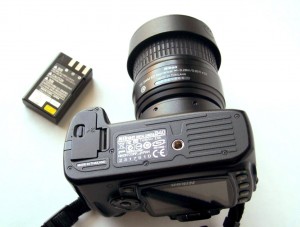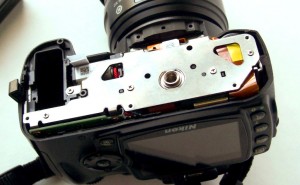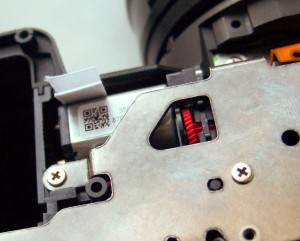A few months ago, my brother gave me his old Nikon D40 digital SLR camera. Through the wear and tear of taking 70,000 pictures over six years, the shutter mechanics had worn down just enough that the shutter would jam after less than ten shots. After unsuccessfully trying to fix it, my brother had replaced the body with a newer model. I was now the lucky recipient of the old camera body, along with the kit lens that originally shipped with it.
At first, I was a little disappointed by the lack of megapixels. I was used to an 8-megapixel sensor in my point-and-shoot Kodak C875, and being downgraded to a 6-megapixel sensor was not what I had in mind when I thought about replacing my old, beat-up Kodak. But after trying out the Nikon, I quickly forgot about the Kodak. The Nikon was so much more powerful, faster, and easier to use.
There was still the shutter sticking problem with the Nikon. Other people online had experienced the same problem with the same camera model and had posted fixes. The consensus agreed that unsticking the shutter was as simple as removing the bottom plate from the camera, and rotating an exposed gear with the tip of a screwdriver, and then putting the bottom plate back on. My brother had done that, but the camera had become stuck again after a few more shots. Something more had to be done to keep it from sticking in the first place, as constantly re-opening the bottom of the camera was out of the question.
I took the suggestions a step further and added some lubricant to the gear (I raided my stash of old CD-ROM drives and scraped together bits of unused silicone grease). It seemed to help, but it wasn’t good enough; I could get anywhere between ten and one hundred shots, but I could never be sure if the shutter wouldn’t stick on the next shot.
I theorized that over time the gear shaft had worn oblong holes where it anchored in the surrounding plastic, loosening the gear and causing the teeth to jam against the next gear instead of meshing properly. When the gear jammed, only the slightest rotation was needed to get it moving freely again. I tried inserting thin plastic shims next to the gear to help reduce the loose wobble I observed when the gear was rotating, but there was little to no improvement; the gear still would jam either on my desk or halfway through a walk in the woods.
I briefly considered drilling a hole in the bottom of the camera, with the end of a plastic shim poking out. When the camera would stick, I would push the end of the shim which would move in and dislodge the jammed gear and then spring back out of the way. However, I really did not want to risk introducing dust into the camera innards. So, no holes allowed.
In addition to the gear wobbling while turning, the motor attached to the gear system also vibrated when running. The torque from the motor would cause it to move in one direction and then the other, ever so slightly. Judging the motor to be mounted securely to the gear housing, I guessed that pushing the motor a certain direction would influence the meshing of the gears. This time, I cut a strip of paper from a notecard and folded it up into a shim, and inserted it in between the end of the motor and the inside of the camera shell. The camera responded by jamming on every other shot.
I seemed to be on to something. If I could all of a sudden make the problem worse by shimming the motor, then maybe I could make the problem better by adding a shim to the motor in a different place. I removed the shim and folded a new one, and this time inserted it in between the side of the motor and the inside of the camera shell.
There was an immediate improvement. No jams after a hundred shots. I put the bottom cover back on and screwed it back together, leaving the shim inside. Cautiously optimistic, I took the camera for a walk. An hour and a couple hundred pictures later, it still hadn’t jammed.
At the time of writing, six months and nearly 16,000 shots later, the camera hasn’t jammed once. I have taken many timelapses and time exposures with it, and it has proved to be as reliable as if nothing had gone wrong in the first place.



Brilliant! It worked like a charm!
Thanks for the info,
Todd
Thanks! Glad that it helped!